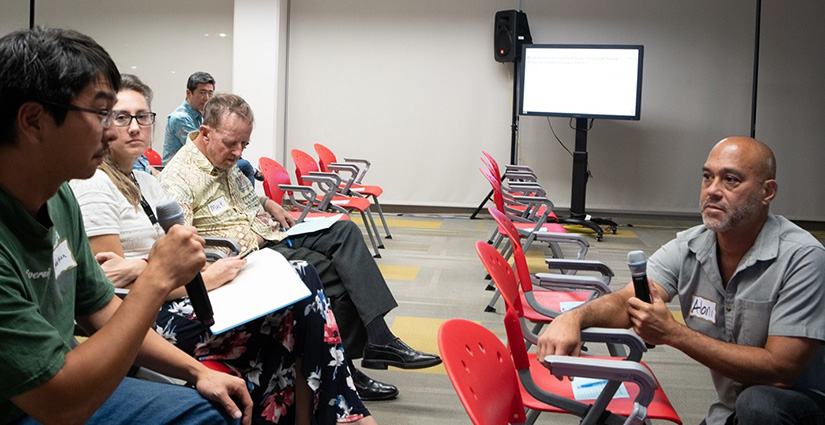Cohort 1: Honolulu, Hawaii
The City and County of Honolulu, Hawaii, conducted microgrid location analyses for regional hybrid microgrids and map design with technical assistance from the Energy Technology Innovation Partnership Project (ETIPP).

Project Summary
 Population Size
Population Size
995,638
 Technology Focus
Technology Focus
Microgrids
 Lead Lab
Lead Lab
National Laboratory of the Rockies
 Regional Partner
Regional Partner
Hawaii is prone to severe weather conditions that have the potential to cause long-duration power outages. The island chain identified hybrid microgrids as one method to improve resilience. Microgrids are best suited to areas prone to prolonged outages during weather events, with clusters of customers and potential availability of renewable energy resources.
Under this project, Hawaiian Electric sought technical assistance through ETIPP to develop criteria for evaluating hybrid microgrids of less than 3 MW on the island of Oahu. Analyses of data provided by Hawaiian Electric, as well as data and models already being used by NLR and Sandia National Laboratories from prior work with Hawaiian Electric, were used to develop a map of potential hybrid microgrid clusters based on locationally specific site criteria.
Project Outcomes
The primary deliverable of the project was a map identifying potential locations given a set of criteria that stakeholders prioritized in the areas of criticality, vulnerability, and societal impact. The map is intended to guide developers to areas deemed suitable for further microgrid analysis and development.
Opportunities and Impacts
Hawaiian Electric hopes to use the map to reduce initial barriers and complexities of developing microgrids on Oahu. The map accounts for the technical and practical viability of microgrid development.
After the map was developed, the project team engaged the community to gather input, which included community meetings and workshops to "talk story" and listen to community feedback.
Additional Information
ETIPP and Microgrids, Hawaiian Electric (2024)
Hawaii Natural Energy Institute Research Highlights, Hawaii Natural Energy Institute Fact Sheet (2023)
Schatz: Kauai and Honolulu Selected To Participate in Energy Department Program Tto Help Transition to Resilient Clean Energy Solutions, U.S. Senator for Hawaii Brian Schatz (2021)
Share
Last Updated Dec. 7, 2025
